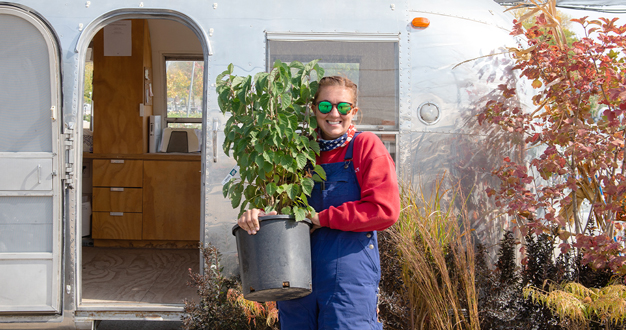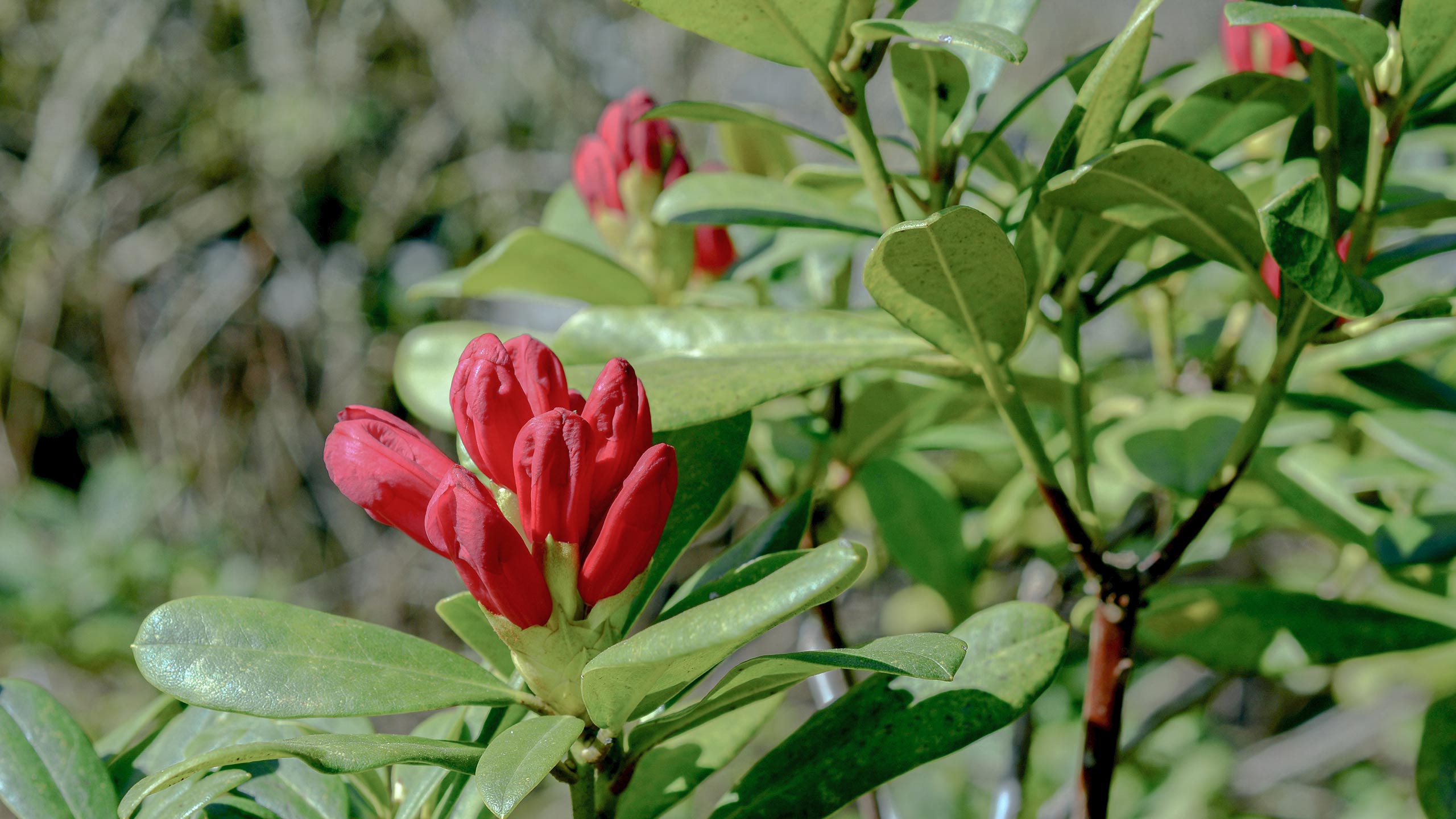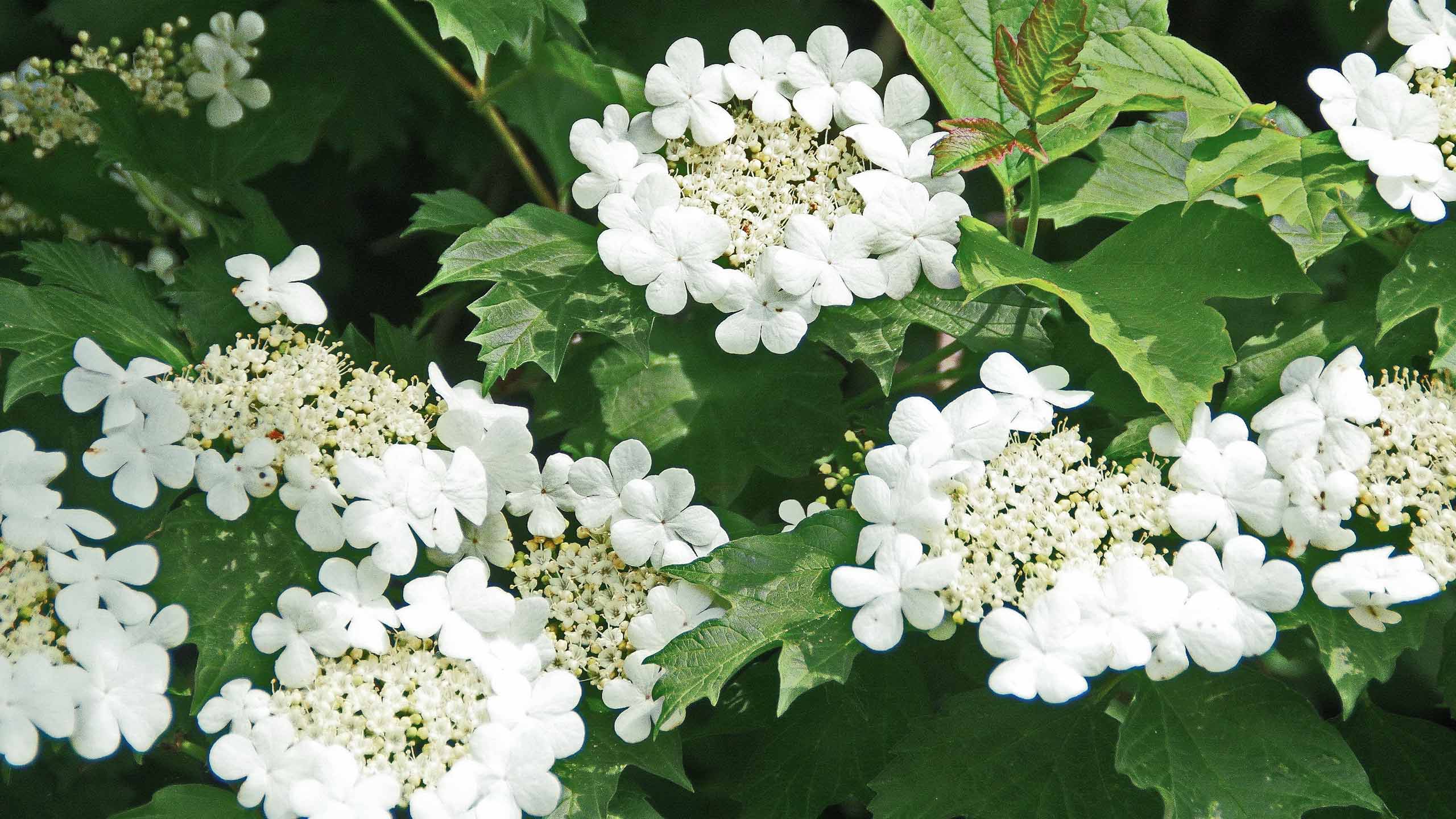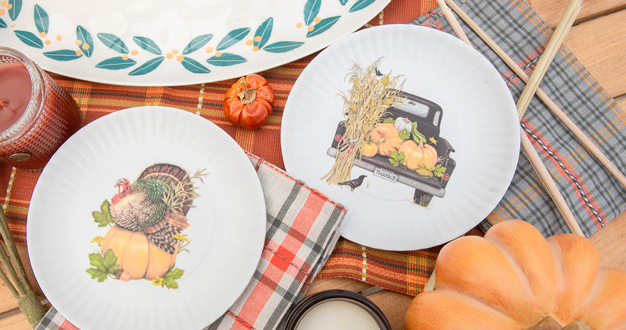
It’s a question we hear a lot in the Nursery Yard: What can we plant to create a screen in our landscape? Maybe you have an unwanted view – like an air conditioning unit or a trash bin that you’d like to hide. Or maybe you’d just like to create a more intimate space out of the neighbors’ view. Either way, landscape plantings can provide the perfect solution – but choosing the right plants for the job can be tricky. What can we plant that fills in quickly, is low-maintenance, and does the job beautifully in a neighbor-friendly way? Here we share a few reasons we think mixed plantings – with evergreens, deciduous trees, shrubs, and even grasses – are the way to go. And for most landscape plants, fall is the perfect time of year for planting.

Mixed Plantings Fill in Faster
When we think of creating a screen to block the neighbors, we often imagine a line of identical tall evergreens – such as arborvitae, yew, or columnar juniper – planted side-by-side along a border fence. Evergreens do an excellent job of providing a solid, year-round screen, but Nursery Yard team member Tom Anderson points out one aspect of evergreens that homeowners should consider – they’re slow growers. If you’re very patient or willing to choose larger – and therefore pricier – plants, then evergreens will always be a great choice. But, if you need your screen to fill in a little faster, Tom recommends some of our multi-stemmed deciduous trees and large shrubs – like Japanese tree lilac, serviceberry, viburnum, or Amur maple. Deciduous trees and shrubs do lose their leaves in the cold months, but when they’re part of a mixed border that also includes some tall evergreens and standing grasses too, the missing foliage isn’t as noticeable – especially in seasons when we’re not using our outdoor spaces as much anyway. And these varieties grow wide as well as tall, so fewer plants are needed to create an effective screen.

Diverse Landscapes are Lower-Maintenance
A perfect line of identical plants is an attractive and well-ordered addition to a landscape, but maintaining that pristine arrangement can take some extra effort. Even within plants of the same species, there will be variations in height, width, color, and fullness that might take away from the unified look we expect. And it may require additional pruning or other maintenance to keep it looking perfect. Mixing in different types of trees, shrubs, grasses, and perennials creates a more natural landscape in which variations are not only expected, they’re celebrated as a part of the overall look.
And large groups of a single species have another potential disadvantage – if one plant comes down with a damaging pest or disease, chances are the other identical plants will be affected too. This can ruin an entire screen pretty quickly. The diverse plants in mixed groups are much less likely to be affected by the same bug or disease at the same time – and if one plant in the group does need to be replaced, there will be others there to maintain the screen while a replacement grows in.

Mixed Landscapes are Appealing
If your neighbor planted a single row of tall evergreens between their property and yours, it might feel like you’re being purposely excluded. Surrounding an air conditioning unit with a ring of identical bushes sends a similar message – these plants are only here to hide something. In contrast, mixed landscapes are not only good screens, they have other important functions too – they can be blended organically into an overall landscape plan that might include pollinator habitat, seasonal interest, shaded play areas, rose gardens, and quiet corners. So while your intention may be to block a view, with mixed arrangements, it’s not as obvious – something both you and your neighbors can appreciate.
Let Us Help
Fall is the perfect time to plant, and if you’re looking for great landscape plants to create privacy in your outdoor space or obscure a view, stop by to visit with our Nursery Yard team. It’s a question we get all the time, and we’d love to show you our favorite plants – both evergreen and deciduous – that will make that goal a reality in your landscape.


